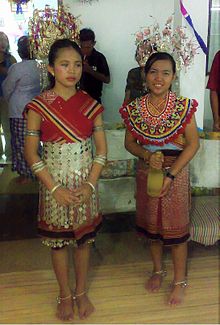Sarawak State Museum
The Sarawak Museum was built by Rajah Charles Brooke in
1891 and modeled on a town hall in Normandy.
The Sarawak State Museum is the oldest museum in Borneo. It was founded in 1888 and opened in 1891 in a purpose-built building in Kuching, Sarawak. Naturalist Alfred Russel Wallace encouraged Charles Brooke, the second White Rajah of Sarawak, to establish the museum.

museum_sarawak

History
The Sarawak Museum was built in 1891 and was extended to its present form in 1911. The building was built to permanently house and display local indigenous arts and crafts, and collections of local animals. Its founding was encouraged by the prominent British naturalist, Alfred Russel Wallace, who was then collecting specimens in the state.The museum was run by military officers during the two world wars. In the Great War, British officers were assigned to it. During the Japanese Occupation of World War II, the museum was directed by a Japanese officer, who was sympathetic to its goals. He protected it and the museum suffered very little damage or looting.
The historic building has been renovated. It is used to exhibit and interpret collections on the natural history of Sarawak. Shell Oil sponsored an exhibit on the petroleum industry, which has been important to Borneo. In addition, it displays archeological artifacts and reconstructions of examples of traditional life of the indigenous peoples, and of their arts and crafts. It has the most comprehensive archeological, natural history, and ethnographic collections on Borneo.
 |
| sarawak_museum_galery |
Architecture
The building has undergone several renovations and alterations since its construction. It is rectangular, 44’ × 160’ with walls and pillars of bricks, and roof of belian and concrete. It was designed in the Queen Anne style of the Victorian period, modeled on a town hall of Normandy, France.The galleries are lighted by dormer windows on the roof, making wall space available for exhibit displays and collections.
 |
| inside_sarawak_museum |
Layout
The ground floor of the museum holds the natural history collection and specimens of Sarawak fauna — reptiles, mammals, birds, etc., all expertly prepared and mounted for display. The west wing of the museum houses the Shell exhibition on the petroleum industries of Sarawak.The first floor has exhibits of ethnographic artifacts of the indigenous peoples, such as models of the various types of longhouses, musical instruments, various kinds of fish and animal traps, handicrafts, models of boats and others.
Museum journal
The Sarawak Museum Journal is published by the museum staff. It was first published in 1911, with John Moulton the inaugural editor, making it one of the oldest scientific journals of the South-East Asian region. Topics covered include the history, natural history and ethnology of the island of Borne.
Sarawak state museum complex including the
Ethnology Museum, Natural Science Museum, Art Museum, pleasant gardens,
pavilions, Heroes Monument and temporary exhibitions. Free Admission.
The of an on wing and the Tun Abdul
Razak Hall (temporary exhibitions) on both sides of Jalan Tun Haji Openg
connected by a footbridge
Opening Hours :
Monday to Sunday
9.00 a.m. to 4.30 p.m
Admission is free !
Links:
Sarawak Museum (official website)Opening Hours :
Monday to Sunday
9.00 a.m. to 4.30 p.m
Admission is free !












